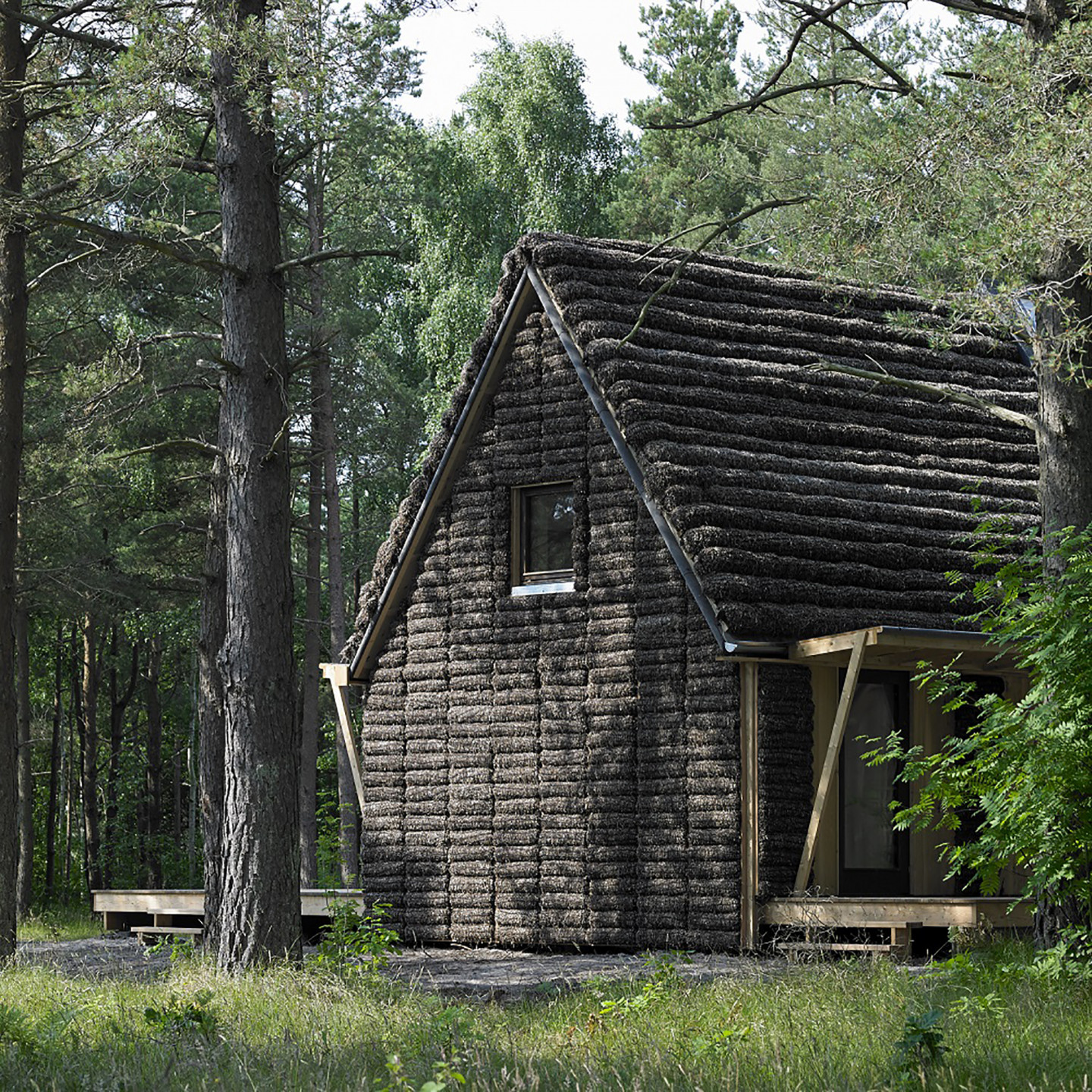Materials derived from the natural environment such as stone, clay and wood, have long been used in construction due to availability and durability. Naturally occurring materials establish a topographic connection with the local landscape, in turn shaping a region’s architectural style.
 The Modern Seaweed House. Image credits: Helene Høyer Mikkelsen
The Modern Seaweed House. Image credits: Helene Høyer Mikkelsen
Many architects and designers combine natural materials with synthetic ones. A combination of concrete and timber, for example, achieves a stylish, contemporary appearance, shown in the Swenson Civil Engineering Building in Minnesota designed by Ross Barney Architects- one of AIA's top green buildings in 2013. As the effects of climate change become increasingly visible, a shift in the way we view and use materials follows.
Mindful of the negative implications of overusing natural resources and the toxic potential of mass-producing synthetic materials, designers are increasingly incorporating unusual but sustainable materials into their projects- one of which is seaweed- which possesses beneficial biological qualities.
Seaweed is a fibrous, malleable and plentiful material and was often used for wall insulation by the Ancient Greeks. Structures would be built using sun-dried clay bricks or a wooden frame which would be filled with seaweed or straw and covered with clay or plaster. Due to the increase of CO2 in our environment, the amount of seaweed in the oceans is increasing, which brings to attention the benefits of using it as a sustainable design material.
 The Modern Seaweed House. Image credits: Helene Høyer Mikkelsen
The Modern Seaweed House. Image credits: Helene Høyer Mikkelsen
One designer constructing designs made from sea-derived materials, including seaweed, is London-based designer, Nir Meiri. His desk lamps are made from seaweed, his pendant lights from sea salt and his tables from discarded fish scales. Meiri’s work critiques the effects of global warming and explores how designers, manufacturers and architects can make better use of materials abundant in nature.
Seaweed, unlike a number of conventional building materials, is non-toxic and its tightly packed cellular makeup means it is also fireproof. A material with a long life expectancy, seaweed also possesses antibacterial compounds, and effectively absorbs moisture, resulting in a healthy indoor microclimate.
 The Modern Seaweed House. Image credits: Helene Høyer Mikkelsen
The Modern Seaweed House. Image credits: Helene Høyer Mikkelsen
Built on the small island of Læsø, Denmark in 2013, The Modern Seaweed House is an example of seaweed performing as an efficient construction material. Developed by Realdania Byg and designed by Vandkunsten firm of architects, the building is constructed largely of timber and insulated with seaweed.
Seaweed houses are an established part of Denmark’s architecture, and the traditionally used for roof and ceiling insulation. However, The Modern Seaweed House uses seaweed slightly differently, stuffing the material into nets which are attached to the roof and facade, allowing the building to keep a constant temperature throughout the winter, absorb water particles and act as a fire deterrent due to its packed compression.
As Nir Meiri’s designs and Vandkunsten’s architectural project illustrate, seaweed has always been a viable, sustainable and uniquely beautiful building material and as the ongoing battle to reduce C02 continues, it is likely that we see more examples of this innovative material being utilised by the construction industry.




